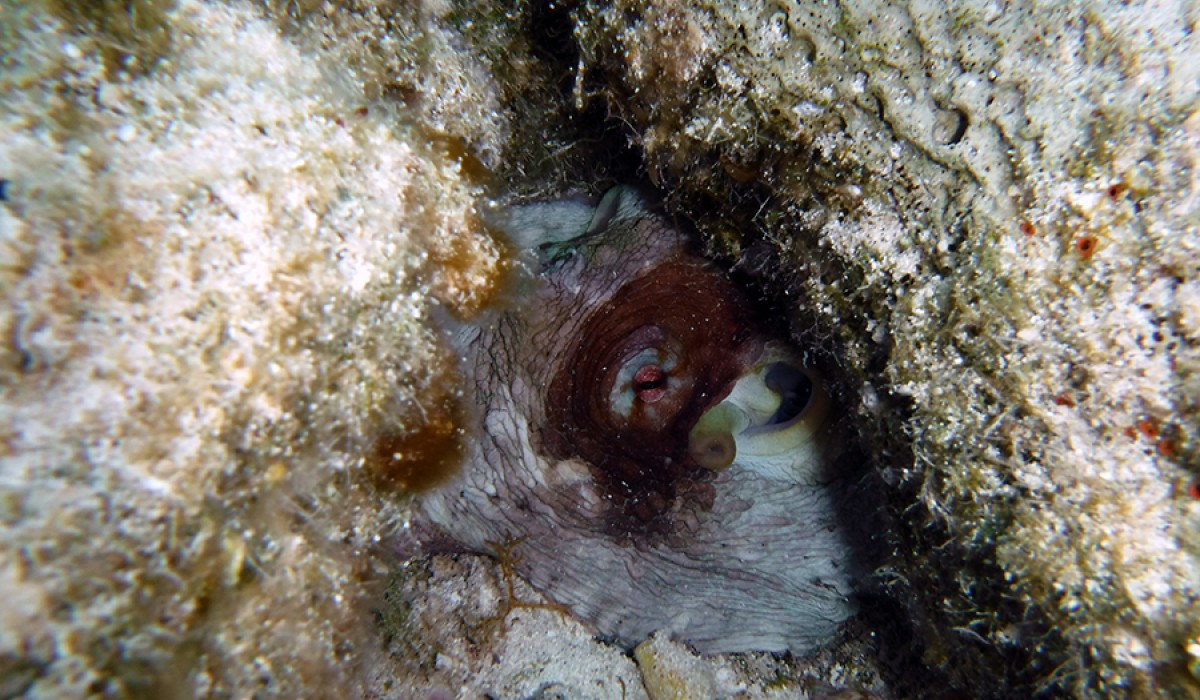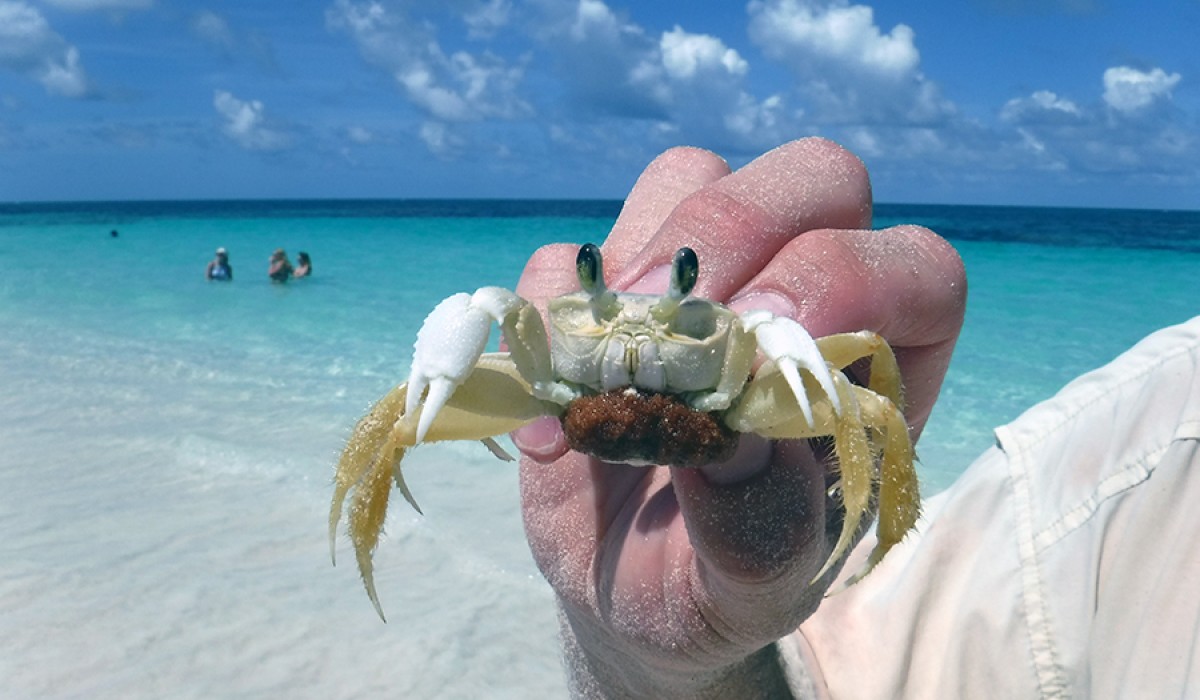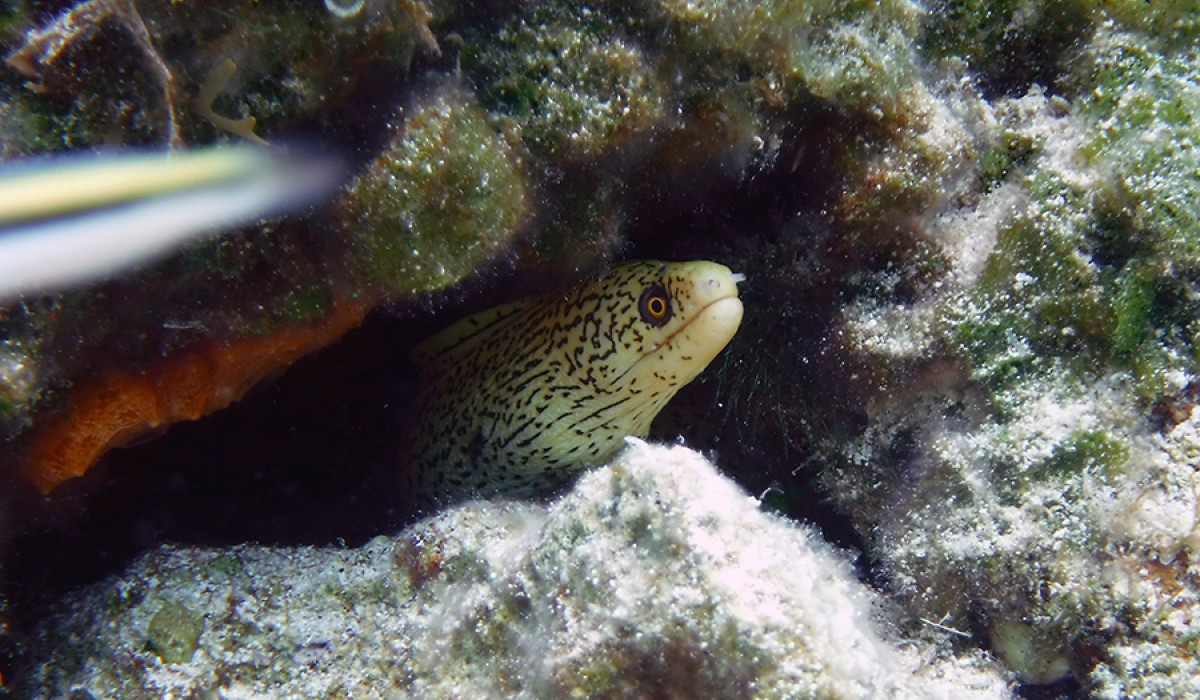Today was a big day for our class as well as the island. We are nearly half-way finished with our program here in San Salvador! We’re all starting to buckle down and begin thinking about potential research projects while also preparing for our scattered site and organism presentations. This morning began as any other one, breakfast and an early deadline to get to the truck and drive to our first snorkel site. We visited snapshot shallows and examined the various interactions of organisms in a shallow water environment. The seabed was scattered with eroded beach rock that provided shelter for many juvenile organisms as well as predators that feed on them. During our snorkel we saw a variety of fish and other species: blueheads, squirrelfish, surgeonfish, a variety of moray eels, and even an octopus! Everyone agreed that the shallows were teeming with life.
On our way back to the GRC, we made an important stop to get a glimpse into island life on San Salvador. Since San Salvador is so small and isolated, very little manufacturing happens on the island itself. When residents buy something that is not already made on the island, it arrives on the mail boat that comes in every Friday. With tomorrow being Labour Day, the mail boat, named Lady Frances docked on this Thursday morning at 8:30. We watched piles of goods be unloaded and distributed amongst the islanders who bought them. Mail boat days are a big day on the island and it often takes five to six hours to completely unload the boat. It was a fascinating experience.
After lunch, we gathered back onto truck ‘Y’ and headed to our second site visit of the day, East Beach! This is the one of the few beaches we visit on the east side of the island. We were all shocked at the amount of garbage that was littered amongst the sand. We realized that this trash is brought from around the world due to the Antilles current. The Antilles current cuts through San Salvador in a cycle of currents that makes up the North Atlantic gyre. Many of the pieces of trash had labels written in foreign languages demonstrating how far trash can carry from around the world through currents. Aside from that, we walked the beach looking for any organisms adapted to the harsh environment of East Beach. We then patrolled the dunes and took turns identifying the plant life. Dr. Welch even dug up a ghost crab that was loaded with eggs! Afterwards the group took a much needed rest and cooled off in the water. Some students aimlessly drifted on the surface while others tried to figure out how to get out of a human knot!
After dinner, we were surprised with a guava cheesecake and guava duff! Everyone enjoyed eating this common Bahamian dessert. We then wrapped up the day with a beautiful sunset and a lecture on biodiversity. We’re anticipating a full day tomorrow and can’t wait to get back in the water!
Drew Suffoletta ‘20 and Cora Lutz ‘21




